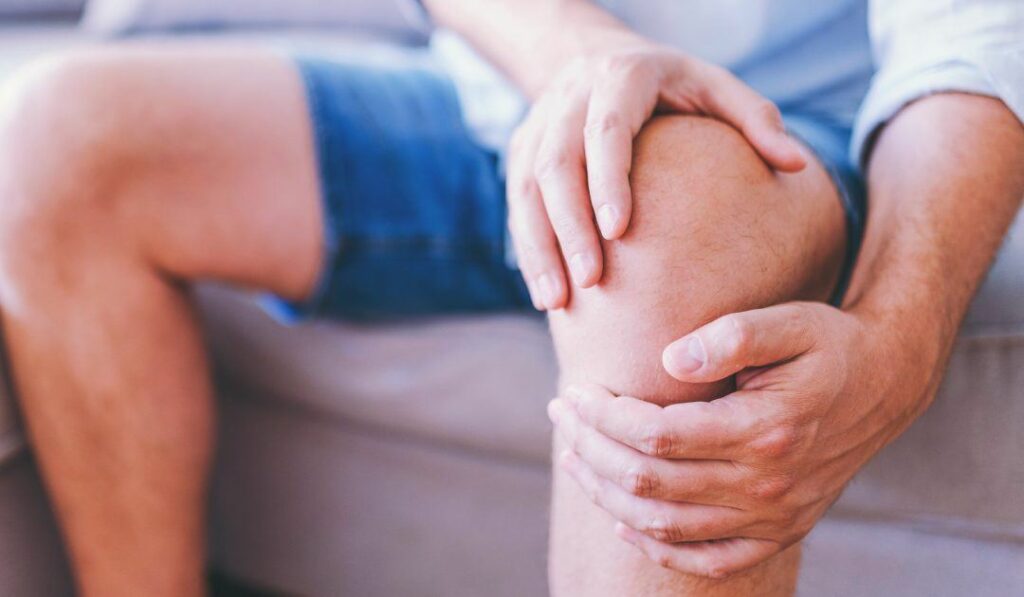Osgood Schlatter disease is a condition that primarily affects children and adolescents. It is caused by stress on the patellar tendon, which attaches the kneecap to the shinbone. This condition can cause pain and swelling in the knee area. In this blog post, we will discuss what Osgood Schlatter’s disease is, how it is diagnosed, and how it is treated.
Contents
- 1 What Is Osgood Schlatter?
- 2 Symptoms of Osgood Schlatter Disease
- 3 Treatment For Osgood Schlatter Disease
- 4 What Happens If You Ignore Osgood Schlatter Disease?
- 5 Can Osgood Schlatter Cause Permanent Damage?
- 6 Can You Workout With Osgood Schlatter?
- 7 How long does Osgood Schlatter’s disease take to go away?
- 8 Conclusion
What Is Osgood Schlatter?
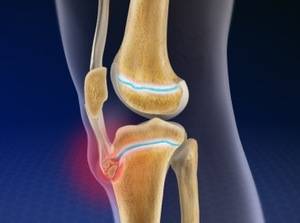
Osgood Schlatter disease is a condition that results in knee pain, usually in adolescents who are active in sports. A bad Osgood Schlatter means that the pain is more severe and persistent. The condition is caused by inflammation of the patellar tendon which attaches to the kneecap (patella). This inflammation is usually the result of overuse or repetitive stress on the knee joint, such as from running, jumping, or other high-impact activities.
Symptoms of Osgood Schlatter Disease
The most common symptom of Osgood Schlatter’s disease is pain or tenderness in the knee, specifically where the patellar tendon attaches to the kneecap. This pain may be worse with activity or after sitting for long periods of time. Other symptoms are:
- Swelling in the knee
- Stiffness in the knee
- Redness or warmth around the kneecap
If you suspect you or your child has Osgood Schlatter disease, it’s important to see a doctor so that the condition can be properly diagnosed and treated. Left untreated, Osgood Schlatter’s disease can lead to long-term knee pain and problems with knee movement.
Treatment For Osgood Schlatter Disease
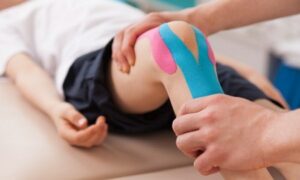 There is no one-size-fits-all treatment for Osgood Schlatter’s disease, but there are several things that can be done to ease the pain and inflammation associated with the condition. Treatments include:
There is no one-size-fits-all treatment for Osgood Schlatter’s disease, but there are several things that can be done to ease the pain and inflammation associated with the condition. Treatments include:
- Rest: This is perhaps the most important treatment for Osgood Schlatter’s disease. Avoiding activities that put stress on the knee joint will help to reduce pain and inflammation.
- Ice: Applying ice to the affected area can help to reduce pain and swelling.
- Heat: Applying heat to the affected area can help to loosen the muscles and tendons around the knee and reduce pain.
- Physical therapy: Physical therapy can help to stretch and strengthen the muscles and tendons around the knee. This can help to reduce pain and prevent further injury.
- Medicine: Nonsteroidal anti-inflammatory drugs (NSAIDs), such as ibuprofen, can help to reduce pain and inflammation. Your doctor may also prescribe stronger medication if over-the-counter options are not effective.
- Surgery: In some cases, surgery may be necessary to remove the bony growths that can occur with Osgood Schlatter’s disease. This is usually only considered if other treatment options have failed.
These treatment options can help to ease the pain and inflammation associated with Osgood Schlatter’s disease and allow you to continue being active. It’s important to talk to your doctor about which treatment options are right for you.
What Happens If You Ignore Osgood Schlatter Disease?
If left untreated there are potential complications of Osgood-Schlatter disease. The most common complication is persistent pain in the knee that can last well into adulthood. In some cases, the pain may never go away completely. Additionally, there is a risk of developing arthritis later in life as a result of the inflammation and stress on the knee joint. If you suspect you or your child has Osgood-Schlatter disease, it is important to see a doctor so that treatment can be started and further complications can be avoided.
Can Osgood Schlatter Cause Permanent Damage?
Osgood Schlatter disease is a condition that can cause knee pain in young athletes. The condition is thought to be caused by overuse of the knee, which can lead to inflammation and irritation of the patellar tendon where it attaches to the kneecap (patella). Osgood Schlatter’s disease usually affects adolescents who are involved in sports that require frequent knee bending, such as soccer, basketball, and volleyball. The condition is most common in boys aged 13 to 15 years.
Osgood Schlatter’s disease typically resolves on its own with rest and over-the-counter pain relievers. However, in some cases, the condition can cause permanent damage to the patellar tendon or kneecap. If you suspect your child has Osgood Schlatter disease, it is important to see a doctor for diagnosis and treatment.
Can You Workout With Osgood Schlatter?
If you have Osgood Schlatter disease, working out may not be the best idea. The condition is characterized by pain and tenderness in the knee, which can make exercise quite difficult. However, there are some physical therapy workouts that may help to ease the symptoms of Osgood Schlatter. Let us discuss these in detail:
Hamstring stretches
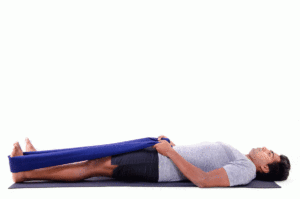
Hamstring stretches can help to loosen the muscles around your knee, which may in turn help to ease the pain associated with Osgood Schlatter. Try lying on your back and placing a towel around your foot. Gently pull on the towel until you feel a stretch in your hamstring. Hold this position for 30 seconds and repeat it 3 times.
Quadriceps stretches
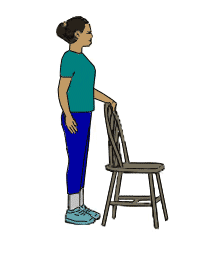
Quadriceps stretches are another great way to ease the pain of Osgood Schlatter. To do this stretch, stand with your feet shoulder-width apart and hold on to something for balance. Bend one knee and bring your heel toward your buttock. Hold this position for 30 seconds and repeat it 3 times.
Heel raises
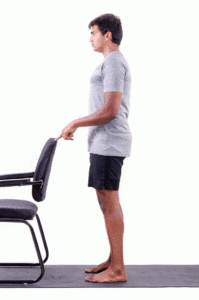
Heel raises can help to strengthen the muscles around your knee, which can in turn help to prevent pain. To do this exercise, stand with your feet shoulder-width apart and hold on to something for balance. Slowly raise up onto your toes and then back down again. Repeat this 10 times.
Stationary bike
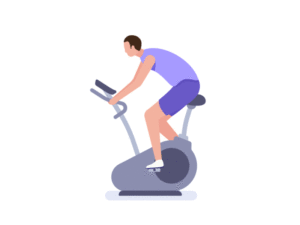
Riding a stationary bike is a great way to get some low-impact cardio in, which can help to ease the pain of Osgood Schlatter. Start off slowly and increase your speed as you feel comfortable.
Swimming

Swimming is another great way to get some low-impact cardio in. Start off slowly and increase your speed as you feel comfortable.
If you have Osgood Schlatter disease, it is important to talk to your doctor before starting any new physical activity. They can help you to create a workout plan that is safe for you.
How long does Osgood Schlatter’s disease take to go away?
Osgood-Schlatter recovery time can vary from a few weeks to several months. The good news is that this condition usually goes away on its own with time and doesn’t cause any long-term damage.
In the meantime, there are things you can do to help relieve your symptoms and speed up the healing process. Like taking ample rest, icing the affected area, and using over-the-counter pain medication like ibuprofen.
In some cases, your doctor may also recommend physical therapy to help stretch and strengthen the muscles and tendons around the knee. Surgery is only necessary in very rare cases when the condition doesn’t improve with conservative treatment.
If you or your child is dealing with Osgood-Schlatter disease, know that you’re not alone. This condition is actually quite common, especially in adolescent boys going through a growth spurt. With the right treatment, it should go away within a few months and won’t cause any lasting damage.
Conclusion
Bad Osgood Schlatter condition is a condition that results from overuse of the knee. It is seen more often in young athletes but can occur in anyone who puts repetitive stress on their knee. Treatment typically involves rest, ice, and pain relief medication. In some cases, physical therapy may be recommended. Surgery is rarely needed.
If you think you may have a bad Osgood Schlatter condition, talk to your doctor. They can help you determine the best course of treatment for your individual situation.
Physical Therapy help patients recover from pain. If you’re experiencing Back pain, Shoulder pain, Knee pain, Neck pain, Elbow pain, Hip pain, or Arthritis pain, a physical therapist at MantraCare can help: Book a physiotherapy session.
